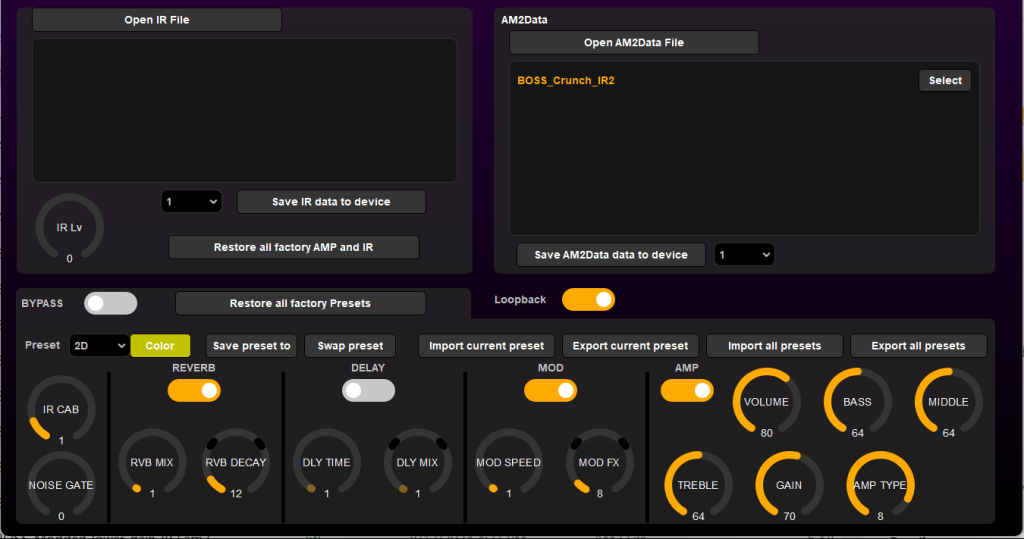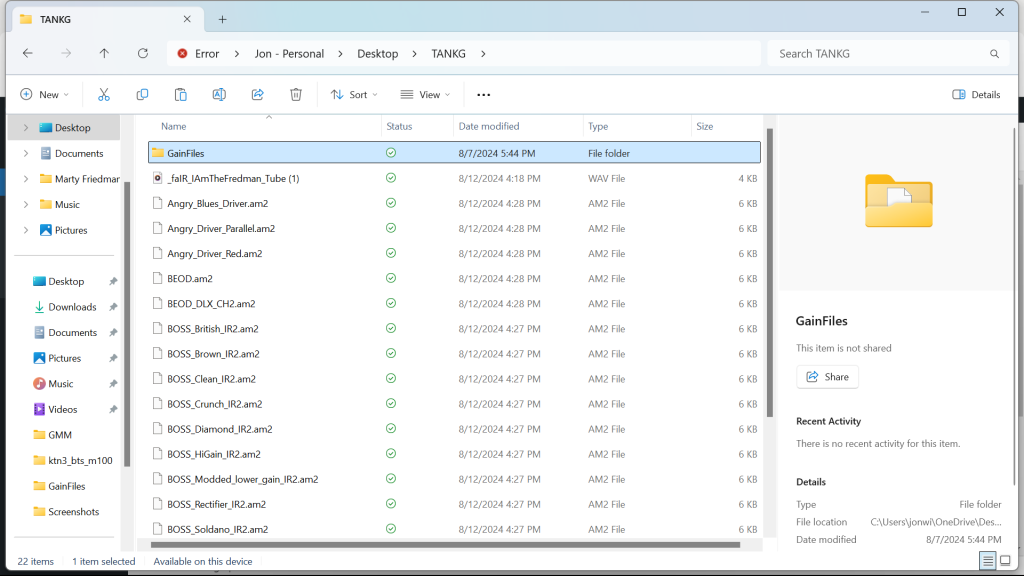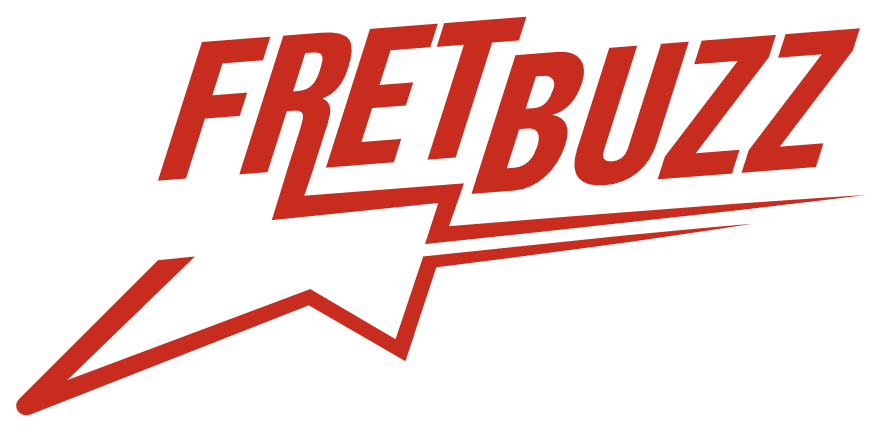
As oodles of bargain hunting tone-chasers and affordable pedal junkies have discovered over the past year or so, the Tank G multi-effects pedal offers plenty of bang for the buck. Right out of the box, the pedal is easy to use and fun to fool around with. As it is, it’s kind of a less pricey alternative to the Tech21 Fly Rig, with similar settings. Most of the built-in tones are pretty good, some are just so-so, and some are impressive and more than usable. The weakest links are the nine IR cabinets and some of the mod tones, which sound overly digital. In the “live” settings, players can turn off the cabinets and dial in the tones they like most. And there are plenty to choose from, making it a solid buy for around $70 US. But wait…
A new powerful combination of software and hardware tools radically improve the available tones and tweaking options available for the Tank G. Meet the Ms. Ann and Mr. EFCS. apps. Ann stands for Artificial Neural Network, and — well, there isn’t actually a Mr. EFCS (thinking of the two as a cyber-AI couple simply amused us). The actually app name is M-EFCS, which stands for the M-Vave Effects Control System.n
So anyway, ANN captures the essence of existing amplifiers and cabinets with complex algorithms and recasts them as surprisingly accurate tone profiles. Many of the sounds available for downloading are quite good and give players a foundation to build some of their favorite guitar sounds. According to M-Vave, by meticulously analyzing the response of a physical amp, ANN builds digital models that mirror the sonic characteristics of the originals.

Once a guitarist creates or downloads a profile on ANN, it can be loaded into the Tank G. A wide variety of amp profiles are available on YouTube and elsewhere, and can be easily found with a bit of properly phrased questions to your favorite AI source. Our friend Dave at Double D Guitar has painstakingly analyzed and assembled numerous profiles for the Tank G, and included many of them for free, along with his YouTube videos that illustrate and explain how to program and download profiles into the unit.
While ANN effectively captures the core sound of an amplifier or cabinet, it’s the M-EFCS app that takes tone shaping to the next plateau. Programmed to work in tandem with ANN, M-EFCS provides precise control over various sonic parameters, allowing guitarists to fine-tune their delay, reverb, chorus, phaser, and tremolo tones in a far wider tone spectrum than can be dialed in with the Tank G knobs alone. Think of it as an effects chain editor that allows players to experiment with different combinations of effects to create pedalboards that fit their taste, and enable deeper customizations of Tank G parameters, including gain staging and EQ.
By loading an ANN profile into the Tank G and then using M-EFCS to tweak the settings, guitarists can achieve much greater range of sounds and a higher quality of tones than those found in many effect simulators, including the pre-programmed Tank G. Both Ann and M-EFCS enable users to save and recall presets in their computer or mobile phone without programming then directly into one of the 36 pedalboard presets. This gives players the ability to experiment with a variety of options before turning them into their new Tank G presets. Programmed presets can easily be saved and shared with other Tank G users. For anyone that’s not happy with the changes they’ve made, all 36 original Tank G presets can be recovered in M-EFCS with a push of a button, assuring you’ll never lose any of those pre-programmed sounds you didn’t mean to change.
What’s most impressive about the ANN and M-EFCS apps is how much they raise the bar on a programmable multi-effect pedal that’s already a better bargain for the price than any other multi-effect pedal we can think of under a $100 price point.


